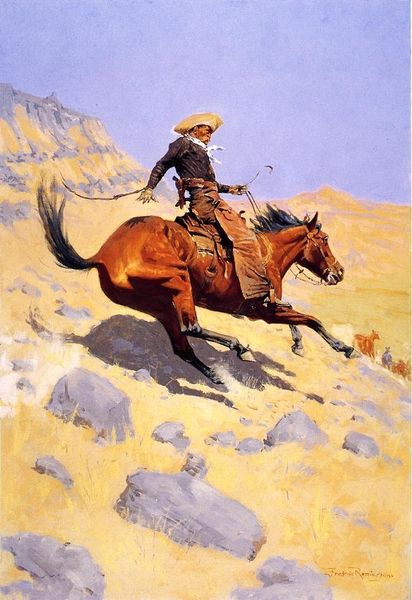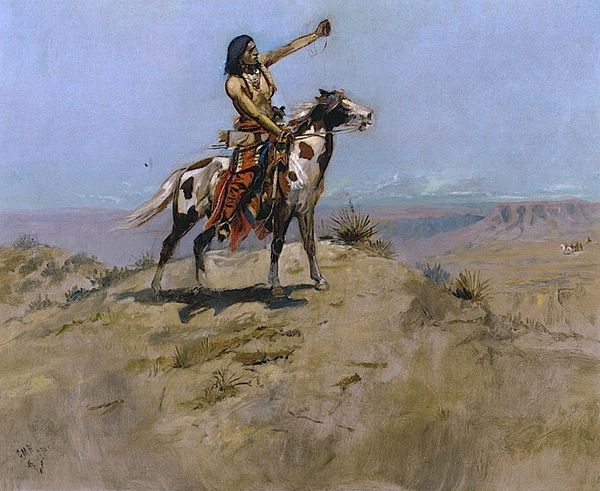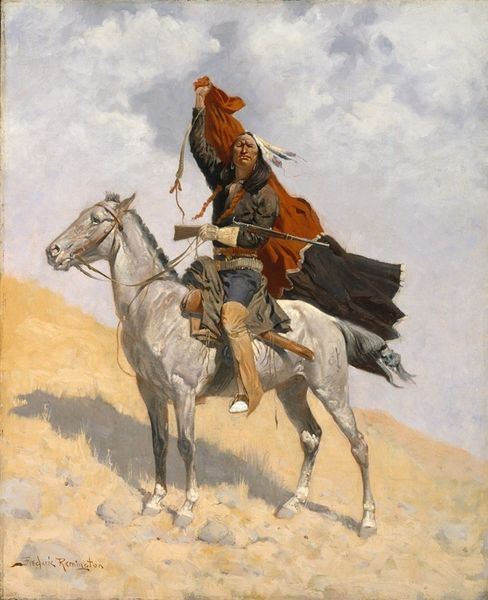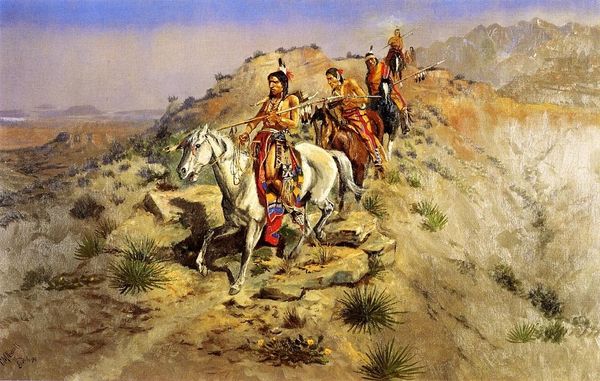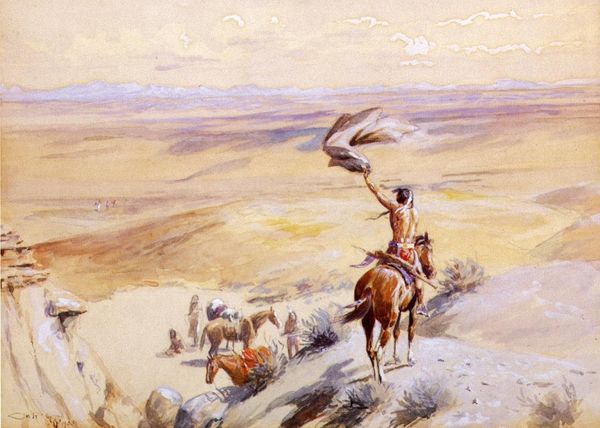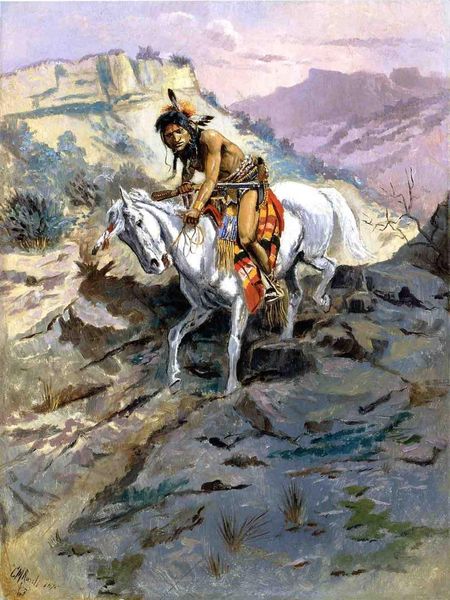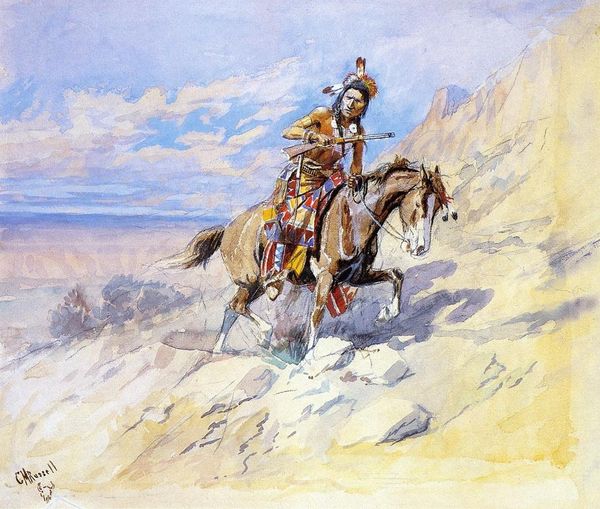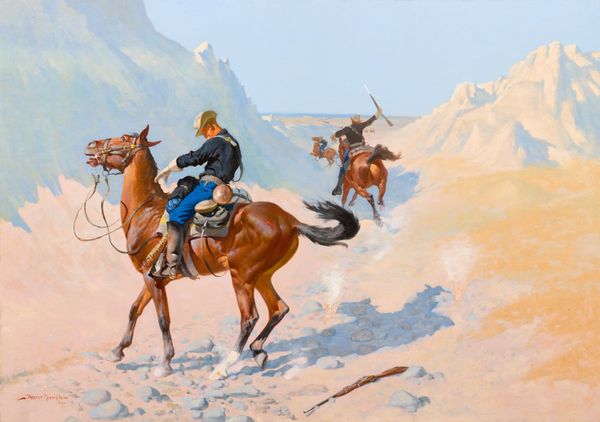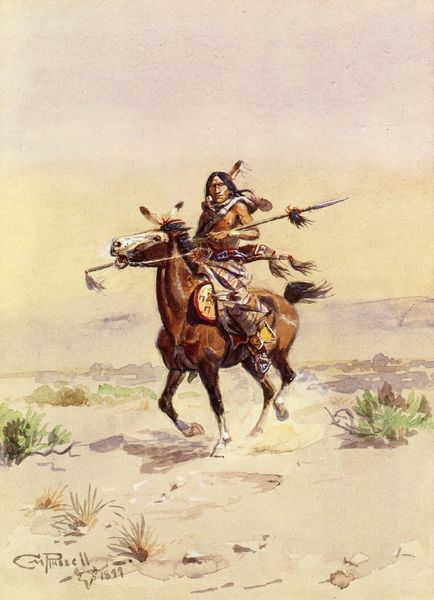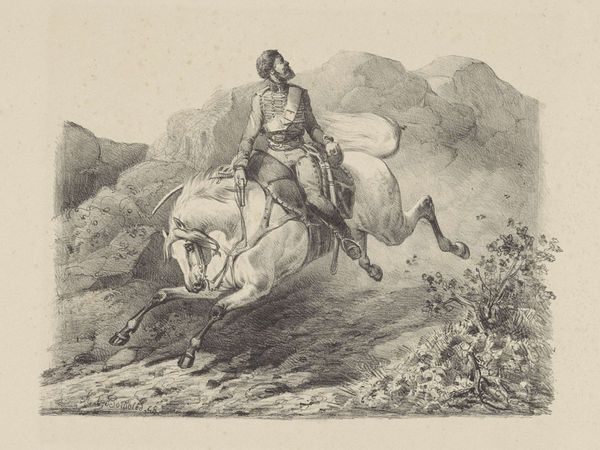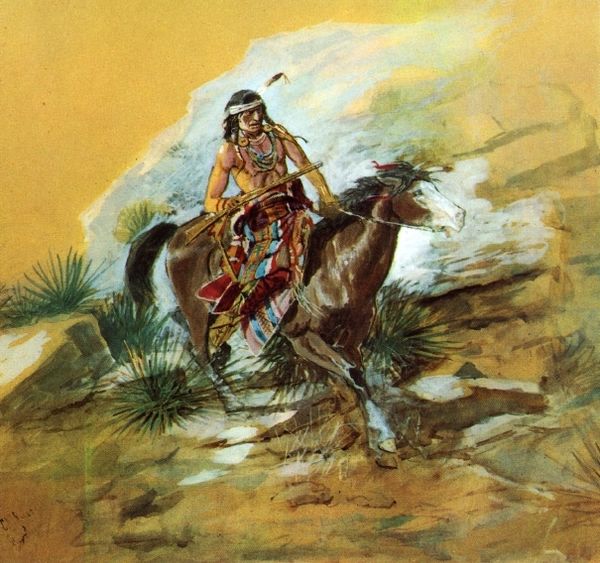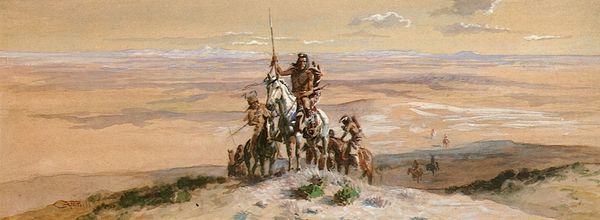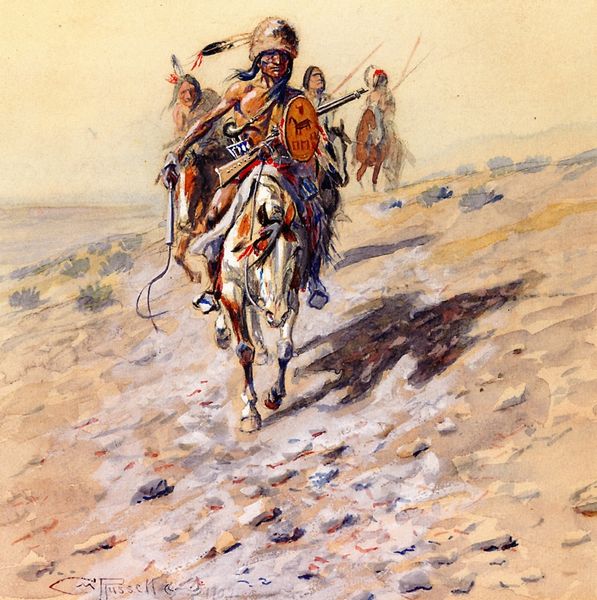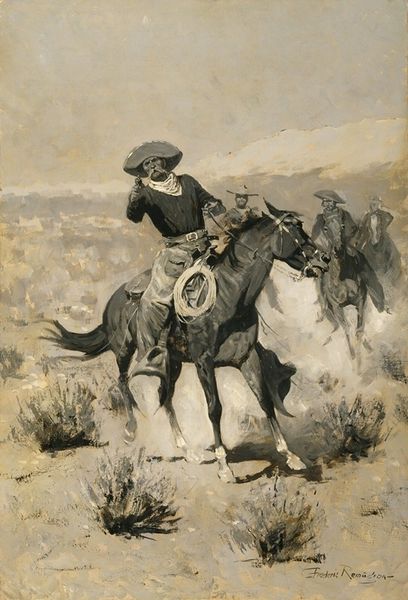
Copyright: Public Domain: Artvee
Editor: This is Frederic Remington's "An Indian Trapper," painted in 1889, using oil paint. The landscape feels both majestic and harsh. What strikes you about this piece? Curator: Immediately, I'm drawn to the interplay between the romanticized image and the labor implied. Consider the material culture depicted: the fur hat, the rifle, the horse tack. Each item tells a story of trade, exploitation, and the transformation of resources into commodities. Editor: So, you see these items as signifiers of larger economic forces? Curator: Precisely. This painting isn't just a portrait. It's a depiction of how the trapper engages with a system far larger than himself. How were those goods manufactured? Who profited from the fur trade? And at what cost to the Indigenous communities and the environment? Notice the trapper's worn clothing, set against the rugged, unforgiving terrain. Remington isn't just painting a pretty picture. Editor: That's a very different reading than what I initially perceived! It does change my view. The artist chose very precise objects to illustrate. Curator: Indeed. Consider the labor involved in producing these goods – the raw materials, the skilled craftspeople, the systems of exchange. Understanding these processes is critical to decoding the layers of meaning in this work. Editor: I see how this approach makes art relevant and thought-provoking. Focusing on material culture opens up many layers for consideration.
Comments
No comments
Be the first to comment and join the conversation on the ultimate creative platform.
